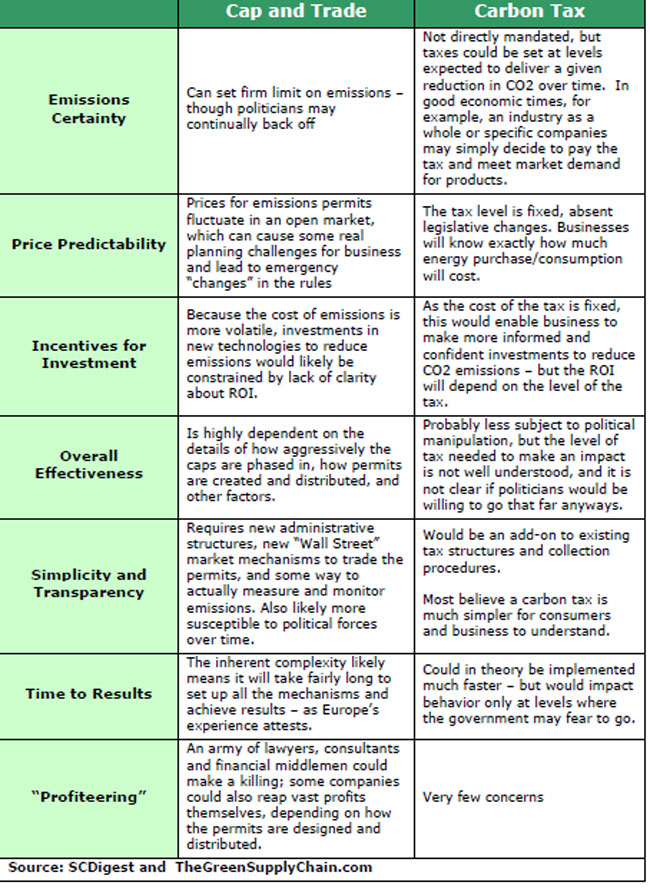The two primary approaches to using a form of tax policy to reduce C02 emissions are the so-called "cap and trade" approach or some form of direct "carbon tax."
Few supply chain professionals really understand, in detail, what either program means or how they are different.
TheGreenSupplyChain.com recently released a report that compared cap-and-trade versus carbon taxes, in detail. That report can be downloaded here: Preparing Supply Chains for the Green Future: Understanding Cap-and-Trade Versus Carbon Taxes.
Below is a short summary taken from that report that compares the two approaches.
Of course, the devil is in the details, so the comparisons might change depending on the specifics of any legislation enacted and how it is enforced in practice.
At the core though is one important difference between the two approaches. A cap-and-trade system, in the end, is focused on the quantity of CO2 emissions, and would, ultimately, fix that level and, in theory, ratchet that level down over time.
A carbon tax, on the other hand, is a price-based approach that seeks to reduce carbon emissions through market-based mechanisms. But, there is no guarantee that higher prices for energy will actually lead to reduced emissions. Business and consumers may simply decide, in many cases, to pay the price.
That difference, as well as others between the two approaches, are summarized in the table below.
In general, it appears that most experts prefer a carbon tax approach for its simplicity and ultimate effectiveness.

Summing that view up, the Los Angeles Times recently editorialized that “For all its benefits, cap-and-trade still isn’t the most effective or efficient approach [for reducing carbon emissions]. That distinction goes to … a carbon tax. While cap-and-trade creates opportunities for cheating, leads to unpredictable fluctuations in energy prices and does nothing to offset high power costs for consumers, carbon taxes can be structured to sidestep all those problems while providing a more reliable market incentive to produce clean-energy technology.”
On the other hand, Nathaniel Keohane, Director of Economic Policy and Analysis for the advocacy group Environmental Defense, says that “You have to set the reductions in stone…Bottom line, cap-and-trade is the most environmentally sound approach and it’s the only politically viable approach.”
Currently, the fundamental problem with both approaches is that there are wildly differing views of where costs to business and/or consumers need to go to make a meaningful impact on reducing carbon emissions. The experience, thus far, in Europe is not encouraging – unless you are a global warming skeptic. There, two versions of cap-and-trade have done nothing to reduce CO2 emissions to date.
What would you add to our comparison between Cap-and-Trade and a carbon tax? Which do you believe is the better approach? Let us know your thoughts at the Feedback button below. 
TheGreenSupplyChain.com is now Twittering! Follow us at www.twitter.com/greenscm
|